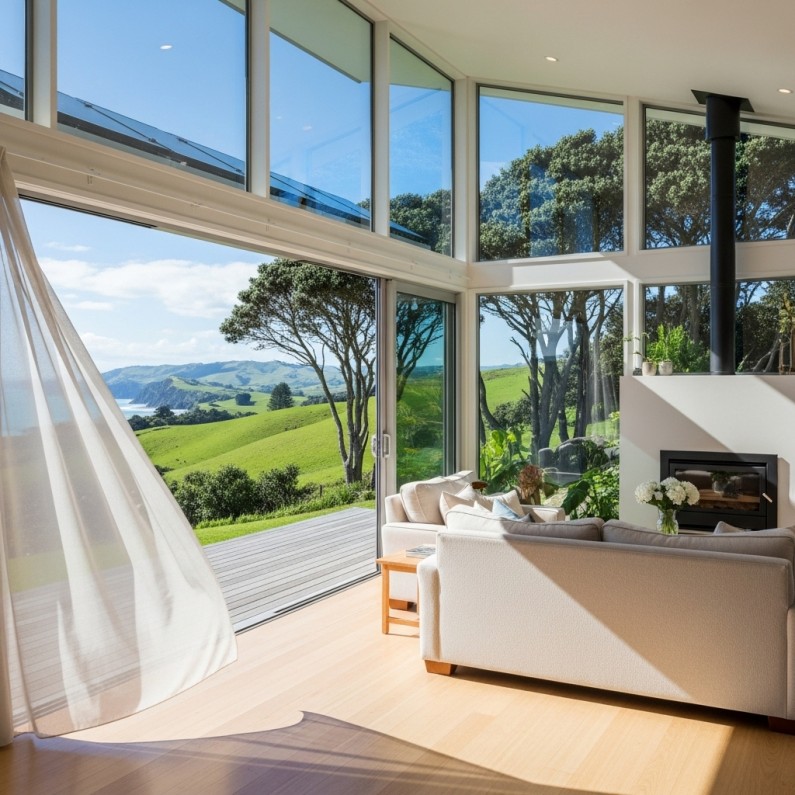Can you open windows in airtight home?

When you're exploring high-performance, energy-efficient homes, you'll often encounter terms like "passive house" and "airtight construction." These concepts are fantastic for boosting comfort and slashing energy bills, but they sometimes lead to a common misconception: "If my house is airtight, does that mean I can never open my windows or doors?"
It's a perfectly valid question, and we're here to give you a definitive answer. The short answer is a resounding yes, you absolutely can! The idea that airtight homes are sealed boxes is simply a myth.
Understanding Airtightness: It's About Smart Control, Not Confinement
At its core, airtightness in building design means minimising uncontrolled air leakage through your home's structure. This isn't about sealing you in; it's about preventing unwanted drafts, stopping heat from escaping (or entering) through hidden cracks and gaps, and controlling moisture and pollutants from getting inside without you knowing.
The Powerful Benefits of True Airtightness for Your Home:
-
Superior Thermal Performance: By eliminating uncontrolled air movement, your home maintains a much more stable indoor temperature. This significantly reduces the energy needed for heating in winter and cooling in summer, leading to lower utility bills.
-
Enhanced Comfort & No More Drafts: Say goodbye to cold spots, annoying drafts, and uneven temperatures. An airtight home provides consistent, comfortable warmth or coolness throughout every single room.
-
Improved Indoor Air Quality (Naturally Fresh Air!): While airtight, these homes are far from "stuffy." They are intelligently designed with controlled ventilation systems, such as Heat Recovery Ventilation (HRV) or Energy Recovery Ventilation (ERV). These systems continuously bring in fresh, filtered outdoor air while expelling stale indoor air, all while recovering heat to maintain efficiency.
-
Reduced Noise Pollution: An airtight building envelope acts as an excellent sound barrier, creating a quieter, more peaceful indoor environment, shielding you from outside noise.
-
Effective Moisture Management: Controlling air movement helps prevent condensation issues within wall cavities, protecting your home from potential moisture damage and the growth of mould.
The Freedom to Open Your Windows and Doors: It's Your Choice!
So, if an airtight home is so effective at keeping air in (and out), why would you ever want to open a window? Because sometimes, you simply want to!
-
Enjoying a Gentle Breeze: On a beautiful spring day in New Zealand, there's nothing quite like a fresh breeze flowing through your home. Airtight homes don't prevent you from enjoying this simple pleasure.
-
Quick Ventilation When You Need It: If you've just finished cooking a particularly fragrant meal, or simply want to air out a room quickly, opening a window or door provides immediate, direct ventilation, just like in any other home.
-
Personal Preference for Your Lifestyle: Ultimately, your home should adapt to your lifestyle, not the other way around. The design principles of an airtight house enhance its performance; they don't dictate how you live within it.
The key difference is this: in an airtight home, opening a window is a conscious choice for comfort or immediate ventilation, rather than a necessity to compensate for a leaky, drafty building. When you close the window, your home efficiently returns to its optimised, energy-saving state, continuing to work smarter for you.
SIPs Panels: Building Airtightness with Unmatched Ease for NZ Homes
Achieving exceptional airtightness doesn't have to be complicated or time-consuming. Structural Insulated Panels (SIPs) are an ideal, high-performance building solution for New Zealand homes, making airtight construction remarkably efficient.
How SIPs Contribute to Superior Airtightness:
-
Large, Solid Panels Reduce Gaps: Unlike traditional stick-built construction, which involves numerous small pieces and many potential air leakage points, SIPs are manufactured as large, continuous panels. This significantly reduces the number of joints and seams where air leakage can occur.
-
Precise Factory Manufacturing: SIPs are fabricated in a controlled factory environment to exact specifications, ensuring tight tolerances and a snug, precise fit when assembled on-site. This precision minimises gaps from the outset.
-
Minimal Thermal Bridging: The continuous insulation core of SIPs minimises thermal bridging – pathways where heat can easily escape or enter, often accompanied by air leakage. This integrated design enhances both thermal performance and airtightness.
-
Simplified, Effective Sealing: The inherent nature of SIPs construction means there are fewer points that require sealing compared to conventional framing. This simplifies the airtightness process on-site, making it easier to achieve a high level of performance consistently.
By choosing SIPs for your project, you're not just getting a strong, durable, and incredibly energy-efficient structure; you're also laying the foundation for an exceptionally airtight home. This translates directly into superior comfort, significantly lower energy bills, and the complete freedom to enjoy fresh air whenever you choose, making SIPs a smart solution for any New Zealand construction project.
Ready to build a home that's both high-performance and perfectly suited to your lifestyle? Explore how SIPs panels can transform your next building project.






